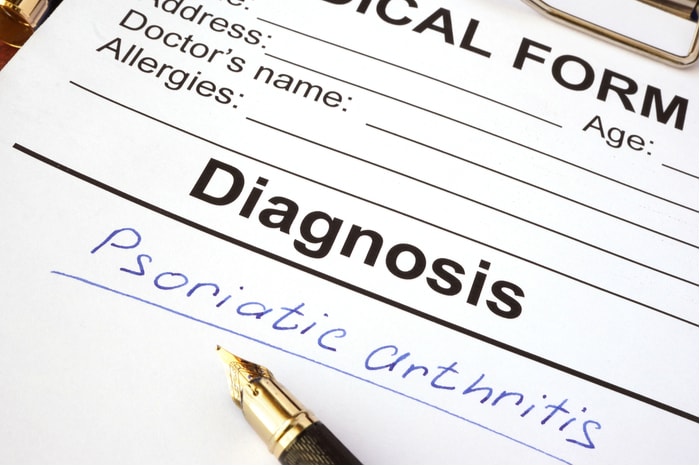Psoriatic Arthritis: Why Early Detection Matters
Many people have heard of arthritis, and most probably know of psoriasis — but few are familiar with psoriatic arthritis. This often-misdiagnosed condition is something lesser known, and yet around 36 percent of Americans with psoriasis also suffer from psoriatic arthritis. Because the condition makes leading a comfortable life difficult for those that it affects, early (and correct) diagnosis is crucial. Here’s what people need to know about psoriatic arthritis.

What is psoriatic arthritis?
Let’s start with the basics. Psoriatic arthritis is a chronic disease that involves inflammation, both of the joints and of the skin itself. It can reduce mobility and make daily life very difficult. The cause of it is unknown, but like all little-understood diseases, it can be linked to genetics, environment and lifestyle. Psoriatic arthritis is often misdiagnosed as rheumatoid arthritis, and though there are some similarities between the two conditions, they should be treated differently. Finally, with psoriatic arthritis, the symptoms of both psoriasis and rheumatoid arthritis are linked — and while a psoriasis diagnosis can come years before the arthritis diagnosis (or vice versa), it’s important to note that the two are connected.
What are the symptoms of psoriatic arthritis?
The symptoms of psoriatic arthritis fall into three categories: symptoms that mimic traditional rheumatoid arthritis, symptoms that mimic psoriasis and symptoms that blend both.
Traditional arthritis symptoms that present themselves in cases of psoriatic arthritis include: joint swelling, joint stiffness, joint redness, joint pain, warm joints, a decreased range of motion, inflamed tendons and an inflamed chest area (which can lead to trouble breathing).
Traditional psoriasis symptoms that present themselves in cases of psoriatic arthritis include: scaly red patches of skin, itchy patches of skin, dry skin and flaky skin.
Now here’s the important part: psoriatic arthritis symptoms can include all of the above, plus: lower back pain, conjunctivitis, nail pitting (little indentations that weaken the nail), and fatigue and swelling of the toes and fingers (which can eventually lead to decreased or eliminated range of motion).
How is psoriatic arthritis treated?
As of right now, there is no cure for psoriatic arthritis. However, there are several options for treatment. They fall into three categories: traditional medicine, lifestyle adjustments and alternative options.
Traditional medicine:
For many years, doctors have treated psoriatic arthritis with anti-inflammatory steroids (also known as NSAIDs). These steroids can help decrease inflammation, which can reduce pain in the joints, soothe the psoriasis on the skin and calm the flare-up overall. However, these NSAIDs can often be accompanied by numerous side effects, such as nausea, hair loss and depression. If an NSAID is part of a treatment plan, it’s important to investigate all of the potential side effects.
Lifestyle adjustments:
Along with medication, exercise programs are also a popular remedy for treating psoriatic arthritis. Keeping the body limber is difficult for people with psoriatic arthritis, but frequent movement also can help maintain range of motion and decrease future flare-ups. Applying heat (like taking a hot shower or sitting in a sauna) can also help warm up the joints and ease the pain that comes with psoriatic arthritis. Finally, maintaining a healthy body weight can play a large role in successfully managing psoriatic arthritis, as even a few extra pounds can put additional pressure on the joints.
Alternative treatment options:
New oral medications may be more effective at treating psoriatic arthritis than traditional drugs, according to the National Psoriasis Foundation. Instead of using a blanket approach to treatment, these oral medications specifically pinpoint the affected cells to target the treatment. There have also been recent studies that suggest there’s a protein that enables the disease to develop. In response, doctors and researchers are testing new therapies that can block this protein.
Remember: Early detection matters.
When psoriatic arthritis is detected early enough, patients can start treatment and this can slow down the future progression of the disease. Now is the time to act if the symptoms of psoriatic arthritis feel like familiar experiences.
Stoppler, Melissa Conrad. (2018, February 21.) Psoriatic Arthritis: Symptoms & Signs. https://medicinenet.com/psoriatic_arthritis_symptoms_and_signs/symptoms.htm
Shiell, William. (N.D.) Psoriatic Arthritis. https://medicinenet.com/psoriatic_arthritis/article.htm#psoriatic_arthritis_facts
Pond, Emily. (2019, May 6.) Patients With Psoriatic Arthritis, Psoriasis Often Face Psychosocial Challenges. https://psychiatryadvisor.com/home/topics/general-psychiatry/patients-with-psoriatic-arthritis-psoriasi s-often-face-psychosocial-challenges/

